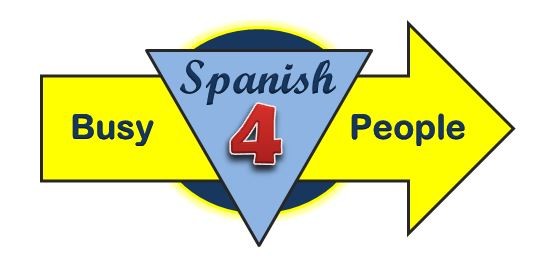Level: All Levels
The most asked question in learning Spanish is, “How do you pronounce the words?” The great thing for learners of Spanish is the words are pronounced just like they are written for the most part. This should be music to your ears since English is nothing like that. It is much more complicated. Take the words “pear” and “beard” for example. The “ea” in both these words sound different. In Spanish this doesn’t happen. There are only a few tricky things to remember but they are easy and most sounds that exist in Spanish you can already pronounce. Sound good so far?
I have decided to break down pronunciation into categories so you can focus at it one piece at a time. So for this post we focus on vowels. Just like in English there are single vowel sounds and vowel combinations. In Spanish there are many less combinations though. A couple notes before we begin, this post is meant as a reference. Come back to it to help you pronounce words, but the guide alone will not teach you to pronounce Spanish words without actually speaking the words to someone. This is a starting point the only way me or any other English speaker learned to pronounce Spanish was by speaking and speaking a lot.
The other thing to note is if you wish to speak with as little accent as possible then realize there are slight differences between English and Spanish. The way you use your tongue, roof of your mouth and lips is different. Native Spanish speakers touch the tip of their tongues to the roof of their mouths (el taladar) often. In English we form many words with our lips and nasal passages. We also tend to unconsciously blow while pronouncing many of our words for example when we say Tom or even the word “pronounce” there is a quick, soft blow between the “T-o” and “p-r”. To eliminate your English accent in Spanish you do not blow.
The Basic Vowels
These vowel sounds are always the same.
a Sounds like the short “o” in the English words October, robot, socks. Here’s how to pronounce some Spanish words with “a”: tanto /TAN-toe/, basta /BA-sta/, Pablo /PAH-bloe/
e Sounds like the short “e” in the English words bent, deck, rest. In Spanish you will see the letter “e” in the words momento /mo- MEN-to/, evento /e-VEN-to/, episodio /e-pee-SO-dyo/
i Sounds like the “ea” vowel combination like in the English words each, rear, seat. You will find this in the Spanish words iglesia /ee- GLAY-see-ah/, siglo /SEE-glo/, comida /ko-MEE-dah/
o Sounds similar to the long “o” like in the English words born, for, bone. In Spanish you will find it in the words sonido /so-NEE-do/, fondo /PHONE-do/, Jose /HOAS-ay/. Please note that this “o” sound is cut short at the end of words. The word “go” ends with a long “o” sound that gets pronounced a split second longer than the final “o” as in the words above sonido and fondo.
u Sounds like the sound you make if you got punched in the stomach “oo” or as in the double “o” as in food or boot. In Spanish you will find this letter in the words mudo /MOO-do/, ruta /ROO-tah/, fruta /FROO-tah/. Please note it does not sound like the double “o” as in the word good. In “good” the sound is too short.
Vowel Combinations
Two Syllable Vowel Combinations
There are two kinds of vowel combinations: 1) with accent mark; 2) no accent. Grammar books with break them down more into more categories, but I do not think it’s a good idea for students to read too much about pronunciation. Pronunciation is best learned from listening and speaking.
- With Accent
The accent mark over a vowel means you stress that vowel sound. In other words, that’s where your intonation goes up.
Vowel Combinations with Accent Marks
a aí pronounced /ah-EE/, aú /ah-OO/ as in “food”
e eí /eh-EE/, eú /eh-OO/ as in “food”
i ía /EE-ah/, íe /EE-eh/
o oí /oh-EE/
u úa /OO-ah/ as in food and the same for the rest of the double “o” sound here, úe /OO-eh/, úi /OO-ee/, úo /OO-oh/
Vowel Combinations without Accent Marks
These combinations do not have any stressed syllables. They are just run together to make one sound. These pronunciations are close but not exact.
a ai /ya/ au /ow/
e ei /ay/ like in the word “day”, eu /ayoo/ “ay” as in “say” and “oo” as in “food”
i ia /eeya/, ie /yeh/, io /ee-oh/, iu /yu/
o oi /oy/
u ua /wa/, ue /weh/, ui /we/, uo /wo/
More Vowel Combinations without Accent Marks
These combinations have two syllables but do not have accent marks written above them; therefore, no stressed syllables.
a ae /ah-ay/, ao /ah-oh/
e ea /eh-ah/, ee /eh-eh/, eo /eh-oh/
o oa /oh-ah/, oe /oh-eh/, oo /oh-oh/

Pingback: “EL SONIDO DEL PESCADOR” | "EN LA POESÍA REALISMO"
Pingback: Pronunciation – Weak and Strong Forms | Kelts School
Pingback: Spanish Vowels | 123 Spanish Tutor Blog